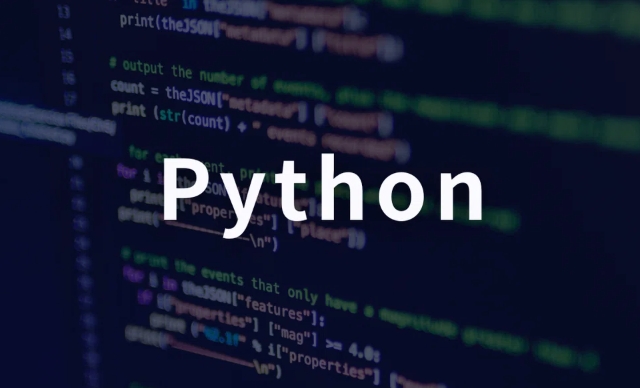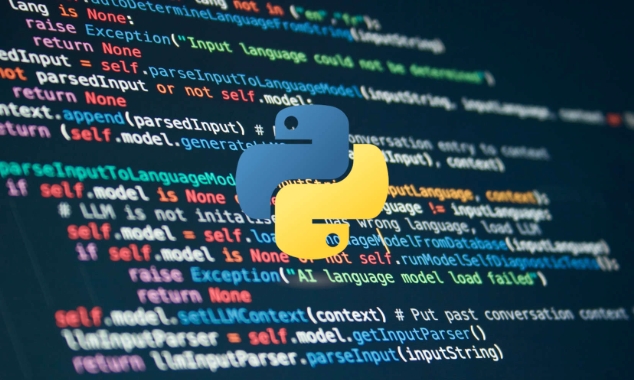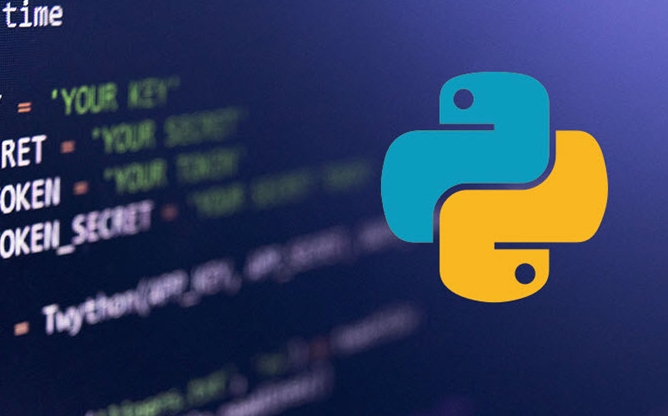Use requests.Session() to send a POST request and maintain a session to log in to the website; 2. Use BeautifulSoup to parse the login page to obtain hidden fields such as CSRF tokens; 3. Construct login data containing username, password and token and submit it; 4. Verify that the login is successful and check the "Logout" or "Dashboard" in the response content; 5. After successful login, use the same session to access the protected page and grab the required content; 6. For pages dynamically rendered by JavaScript, Selenium should be used instead to simulate browser operations; 7. Always comply with the website robots.txt and terms of use of the production environment, avoid hard-coded credentials in the production environment, and recommend using environment variables to store sensitive information, and ultimately ensure that the scraping behavior is legal and compliant.

If you need to scrape a website that requires login, you'll typically need to send a POST request with your credentials first, maintain the session, and then access the protected pages. Here's a practical example using Python's requests and BeautifulSoup libraries to log in and scrape a page behind authentication.

We'll use a dummy login form structure (like many real sites) and show how to handle it.
? 1. Required Libraries
Install the needed packages if you haven't:

pip install requests beautifulsoup4
? 2. Example: Login and Scrape a Page
import requests
from bs4 import BeautifulSoup
# Step 1: Start a session
session = requests.Session()
# Step 2: URL of the login page (example)
login_url = 'https://httpbin.org/post' # Placeholder - replace with actual login URL
target_url = 'https://example.com/dashboard' # Page you want to scrape after login
# Step 3: Get login page (to extract hidden form fields like CSRF tokens if needed)
login_page = session.get('https://example.com/login')
soup = BeautifulSoup(login_page.content, 'html.parser')
# Optional: Extract hidden inputs (eg, CSRF token)
csrf_token = soup.find('input', {'name': 'csrf_token'})['value'] # Adjust name as needed
# Step 4: Prepare login payload
payload = {
'username': 'your_username',
'password': 'your_password',
'csrf_token': csrf_token # Include if present
}
# Step 5: Submit login form
response = session.post('https://example.com/login', data=payload)
# Step 6: Check if login was successful
if "Logout" in response.text or "Dashboard" in response.text:
print("? Login successful")
else:
print("? Login failed")
print(response.status_code)
print(response.text[:500]) # Debug output
exit()
# Step 7: Scrape a protected page
protected_page = session.get(target_url)
soup = BeautifulSoup(protected_page.content, 'html.parser')
# Example: Extract page title or specific content
print("Page Title:", soup.title.string)
# Or scrape data
data = soup.find_all('div', class_='content') # Adjust selector
for item in data:
print(item.get_text(strip=True))? 3. Key Points to Remember
- Session Persistence : Use
requests.Session()to keep cookies and stay logged in. - Inspect the Login Form : Use browser DevTools (F12) to:
- Find the correct login URL (form's
actionattribute) - Check input field names (eg,
username,email,password,csrf_token)
- Find the correct login URL (form's
- CSRF & Hidden Fields : Many sites require tokens — always check for hidden inputs.
- HTTPS & Security : Never hardcode credentials in production. Use environment variables:
import os username = os.getenv('LOGIN_USER') password = os.getenv('LOGIN_PASS')
- Respect
robots.txtand Terms of Service — scraping may be prohibited.
? 4. Real-World Example (Generic Pattern)
import requests
from bs4 import BeautifulSoup
import os
session = requests.Session()
# Load credentials
USER = os.getenv('USERNAME', 'test@example.com')
PASS = os.getenv('PASSWORD', 'secret')
# Fetch login page
resp = session.get('https://example.com/login')
soup = BeautifulSoup(resp.text, 'html.parser')
# Extract CSRF token
token = soup.find('input', {'name': 'authenticity_token'})['value']
# Login data
data = {
'authenticity_token': token,
'user[email]': USER,
'user[password]': PASS,
'commit': 'Log in'
}
# Post to login
r = session.post('https://example.com/sessions', data=data)
# Now scrape
dashboard = session.get('https://example.com/my-account')? 5. Alternative: Use Selenium for JavaScript-heavy Sites
If the login is handled by JavaScript (eg, React, Vue), use Selenium :
from selenium import webdriver
from selenium.webdriver.common.by import By
driver = webdriver.Chrome()
driver.get("https://example.com/login")
driver.find_element(By.NAME, "username").send_keys("your_user")
driver.find_element(By.NAME, "password").send_keys("your_pass")
driver.find_element(By.XPATH, "//button[@type='submit']").click()
# Wait and go to target page
driver.implicitly_wait(5)
driver.get("https://example.com/profile")
print(driver.page_source)
driver.quit() Basically, for simple forms: requests Session works great. For dynamic sites: go with Selenium . Always test on a small scale and check the site's policies.

The above is the detailed content of python web scraping with login example. For more information, please follow other related articles on the PHP Chinese website!

Hot AI Tools

Undress AI Tool
Undress images for free

Undresser.AI Undress
AI-powered app for creating realistic nude photos

AI Clothes Remover
Online AI tool for removing clothes from photos.

Clothoff.io
AI clothes remover

Video Face Swap
Swap faces in any video effortlessly with our completely free AI face swap tool!

Hot Article

Hot Tools

Notepad++7.3.1
Easy-to-use and free code editor

SublimeText3 Chinese version
Chinese version, very easy to use

Zend Studio 13.0.1
Powerful PHP integrated development environment

Dreamweaver CS6
Visual web development tools

SublimeText3 Mac version
God-level code editing software (SublimeText3)

Hot Topics
 Polymorphism in python classes
Jul 05, 2025 am 02:58 AM
Polymorphism in python classes
Jul 05, 2025 am 02:58 AM
Polymorphism is a core concept in Python object-oriented programming, referring to "one interface, multiple implementations", allowing for unified processing of different types of objects. 1. Polymorphism is implemented through method rewriting. Subclasses can redefine parent class methods. For example, the spoke() method of Animal class has different implementations in Dog and Cat subclasses. 2. The practical uses of polymorphism include simplifying the code structure and enhancing scalability, such as calling the draw() method uniformly in the graphical drawing program, or handling the common behavior of different characters in game development. 3. Python implementation polymorphism needs to satisfy: the parent class defines a method, and the child class overrides the method, but does not require inheritance of the same parent class. As long as the object implements the same method, this is called the "duck type". 4. Things to note include the maintenance
 Python Function Arguments and Parameters
Jul 04, 2025 am 03:26 AM
Python Function Arguments and Parameters
Jul 04, 2025 am 03:26 AM
Parameters are placeholders when defining a function, while arguments are specific values ??passed in when calling. 1. Position parameters need to be passed in order, and incorrect order will lead to errors in the result; 2. Keyword parameters are specified by parameter names, which can change the order and improve readability; 3. Default parameter values ??are assigned when defined to avoid duplicate code, but variable objects should be avoided as default values; 4. args and *kwargs can handle uncertain number of parameters and are suitable for general interfaces or decorators, but should be used with caution to maintain readability.
 Explain Python generators and iterators.
Jul 05, 2025 am 02:55 AM
Explain Python generators and iterators.
Jul 05, 2025 am 02:55 AM
Iterators are objects that implement __iter__() and __next__() methods. The generator is a simplified version of iterators, which automatically implement these methods through the yield keyword. 1. The iterator returns an element every time he calls next() and throws a StopIteration exception when there are no more elements. 2. The generator uses function definition to generate data on demand, saving memory and supporting infinite sequences. 3. Use iterators when processing existing sets, use a generator when dynamically generating big data or lazy evaluation, such as loading line by line when reading large files. Note: Iterable objects such as lists are not iterators. They need to be recreated after the iterator reaches its end, and the generator can only traverse it once.
 Python `@classmethod` decorator explained
Jul 04, 2025 am 03:26 AM
Python `@classmethod` decorator explained
Jul 04, 2025 am 03:26 AM
A class method is a method defined in Python through the @classmethod decorator. Its first parameter is the class itself (cls), which is used to access or modify the class state. It can be called through a class or instance, which affects the entire class rather than a specific instance; for example, in the Person class, the show_count() method counts the number of objects created; when defining a class method, you need to use the @classmethod decorator and name the first parameter cls, such as the change_var(new_value) method to modify class variables; the class method is different from the instance method (self parameter) and static method (no automatic parameters), and is suitable for factory methods, alternative constructors, and management of class variables. Common uses include:
 How to handle API authentication in Python
Jul 13, 2025 am 02:22 AM
How to handle API authentication in Python
Jul 13, 2025 am 02:22 AM
The key to dealing with API authentication is to understand and use the authentication method correctly. 1. APIKey is the simplest authentication method, usually placed in the request header or URL parameters; 2. BasicAuth uses username and password for Base64 encoding transmission, which is suitable for internal systems; 3. OAuth2 needs to obtain the token first through client_id and client_secret, and then bring the BearerToken in the request header; 4. In order to deal with the token expiration, the token management class can be encapsulated and automatically refreshed the token; in short, selecting the appropriate method according to the document and safely storing the key information is the key.
 What are Python magic methods or dunder methods?
Jul 04, 2025 am 03:20 AM
What are Python magic methods or dunder methods?
Jul 04, 2025 am 03:20 AM
Python's magicmethods (or dunder methods) are special methods used to define the behavior of objects, which start and end with a double underscore. 1. They enable objects to respond to built-in operations, such as addition, comparison, string representation, etc.; 2. Common use cases include object initialization and representation (__init__, __repr__, __str__), arithmetic operations (__add__, __sub__, __mul__) and comparison operations (__eq__, ___lt__); 3. When using it, make sure that their behavior meets expectations. For example, __repr__ should return expressions of refactorable objects, and arithmetic methods should return new instances; 4. Overuse or confusing things should be avoided.
 How does Python memory management work?
Jul 04, 2025 am 03:26 AM
How does Python memory management work?
Jul 04, 2025 am 03:26 AM
Pythonmanagesmemoryautomaticallyusingreferencecountingandagarbagecollector.Referencecountingtrackshowmanyvariablesrefertoanobject,andwhenthecountreacheszero,thememoryisfreed.However,itcannothandlecircularreferences,wheretwoobjectsrefertoeachotherbuta
 Describe Python garbage collection in Python.
Jul 03, 2025 am 02:07 AM
Describe Python garbage collection in Python.
Jul 03, 2025 am 02:07 AM
Python's garbage collection mechanism automatically manages memory through reference counting and periodic garbage collection. Its core method is reference counting, which immediately releases memory when the number of references of an object is zero; but it cannot handle circular references, so a garbage collection module (gc) is introduced to detect and clean the loop. Garbage collection is usually triggered when the reference count decreases during program operation, the allocation and release difference exceeds the threshold, or when gc.collect() is called manually. Users can turn off automatic recycling through gc.disable(), manually execute gc.collect(), and adjust thresholds to achieve control through gc.set_threshold(). Not all objects participate in loop recycling. If objects that do not contain references are processed by reference counting, it is built-in






